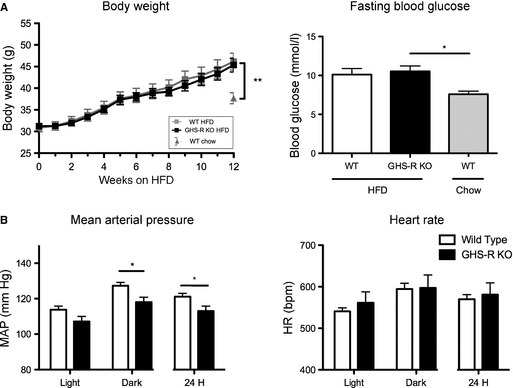Figure 3.

Diet‐induced obese (DIO) Growth hormone secretagogue receptor (GHS‐R) deficient mice have lower MAP than their WT littermates despite similar body weights. Male adult WT and GHS‐R KO mice were fed a HFD for 12 weeks and cardiovascular parameters recorded every other day. (A) HFD‐fed WT and GHS‐R KO mice significantly increase in body weight and show fasting hyperglycemia (one‐way ANOVA, *P < 0.05, **P < 0.01, WT chow n = 9, WT HFD n = 10, GHS‐R KO n = 9). (B) Radio‐telemetry measurements in DIO WT and GHS‐R KO littermate mice after 12 weeks of HFD feeding. GHS‐R KO mice have lower MAP than WT littermates despite similar weight gain on HFD. (dark phase (9 pm–5 am)/light phase (9 am–5 pm) two‐way repeated measures ANOVA for time and genotype; 24 h t‐test; *P < 0.05 for genotype; WT n = 8; GHS‐R KO n = 6).
